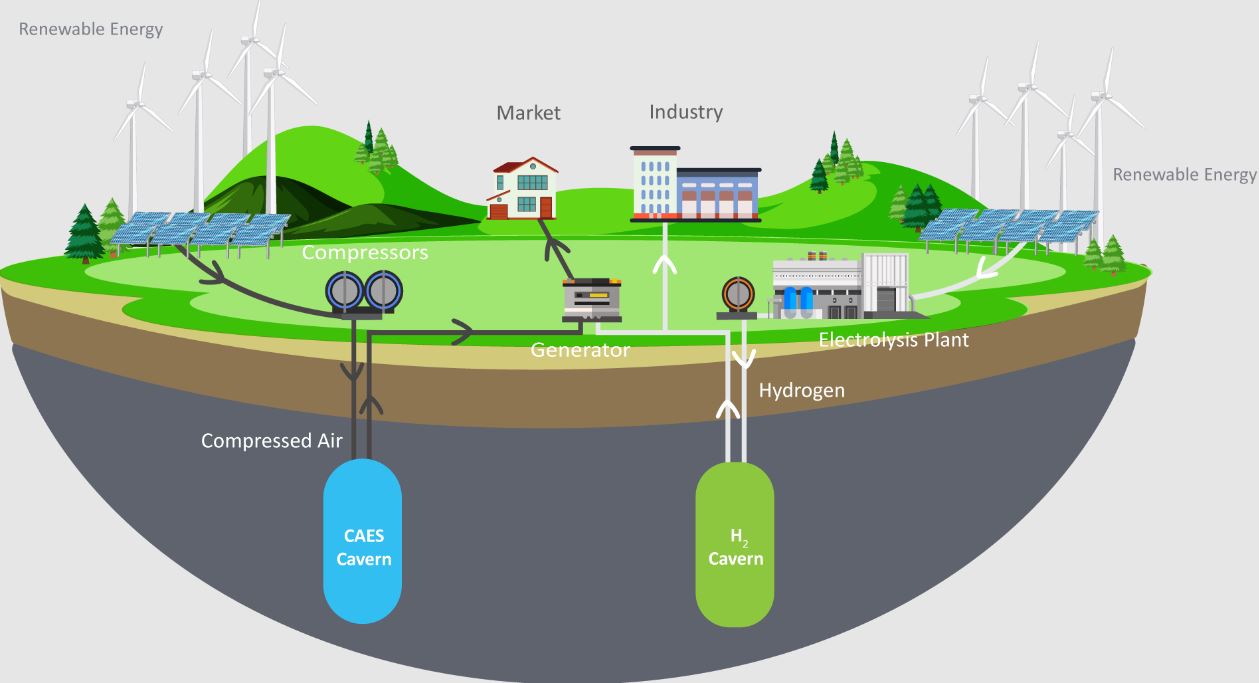Germany – Eneco and Corre Energy have inked a provisional agreement for the collaborative development and investment in Corre Energy’s inaugural Compressed Air Energy Storage (CAES) project in Germany.
Compressed Air Energy Storage (CAES) is a pivotal player in the realm of long-duration energy storage. The essence of this technology lies in harnessing surplus sustainable electricity to compress air with a substantial capacity of 220 MW. The compressed air is then stored in salt caverns, positioned approximately a kilometer beneath the Earth’s surface. When demand surpasses supply or during periods with insufficient sun or wind, the stored compressed air is channeled to a turbine with a 320 MW generation capacity, producing electricity.
The collaboration between Eneco and Corre Energy encompasses the joint development, financing, and operation of the CAES project through their respective German subsidiaries—Eneco’s LichtBlick and Corre Energy’s Corre Energy Germany GmbH. Exclusive negotiations have started, with both entities anticipating the finalization of a comprehensive agreement in the first half of 2024.
CAES solution
Corre Energy’s CAES solution involves utilizing salt caverns for storage, set to be transferred to Corre Energy in an empty state by 2027. Currently, these caverns are in use for salt extraction by chemical company Solvay. The deployment of CAES not only ensures efficient energy storage but also aids in mitigating grid congestion, contributing to a more stable and resilient energy infrastructure.
The chosen site for the CAES project in Ahaus, situated in the German state of North Rhine-Westphalia, holds strategic significance. Positioned between a burgeoning area of wind power generation in northern Germany and the power-intensive urban and industrial regions in the south, Ahaus offers an ideal location. Moreover, its proximity to Germany’s hydrogen network (H2-Startnetz) amplifies its potential impact on the broader energy landscape.
The successful execution of the HYDREAMS project is anticipated to pave the way for significant investments in deploying green hydrogen reheating furnaces in at least five steel plants across Europe, marking a transformative phase in the steel industry.




